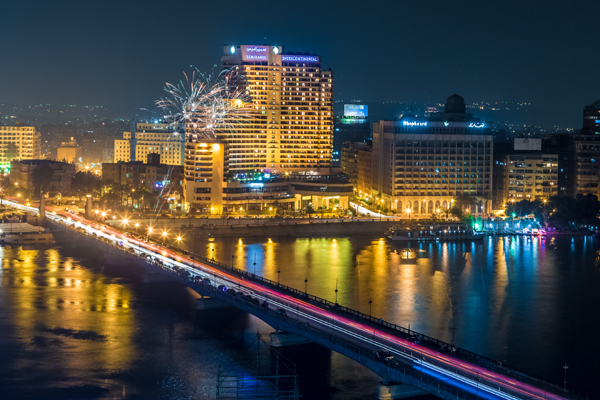
Cairo...positive hospitality performance
Key Mena hospitality markets still performing strongly
DUBAI, June 10, 2015
Leading four and five-star hotels in Cairo (Egypt), Beirut (Lebanon) and Doha (Qatar) showed a strong performance during the first quarter of the year despite the sustained drop in oil prices, a report said.
Cairo led the region in hospitality performance in the first quarter, recording 106.6 per cent rise in revenue-per-available-room (RevPAR) due to an increase in both the average room rate and occupancy, an EY Middle East Hotel Benchmark Survey Report showed.
Average room rate increased from $76 in Q1 2014 to $103 in Q1 2015. Overall occupancy rate shot up 16 per cent reaching 46 per cent in Q1 2015, up from 30 per cent in Q1 last year. This increase could be credited to the growing political stability as well as the recent uptick in the economic activity of the country.
Following Cairo, Beirut witnessed a 46.5 per cent increase in RevPAR in Q1 2015 due to a 14 per cent increase in overall occupancy and an 8 per cent increase in average room rate compared to Q1 2014.
Leading the GCC, Doha’s RevPAR increased by 22.2 per cent compared to the first quarter of last year. Hotel rates increase from $204 in Q1 2014 to $167 in Q1 2015. This was mainly due to the 11.5 per cent increase in average daily rate (ADR) and a growth in occupancy from 69 per cent in Q1 2014 to 76 per cent in Q1 2015.
Hospitality markets in Cairo, Madinah and Beirut witnessed a positive increase in April with Cairo continuing to witness a double digit increase in RevPAR of 78.7 per cent in April when compared to the same period last year.
This was mainly due to the increase in average occupancy from 35 per cent in April 2014 to 49 per cent in April this year due to the Easter break holidays.
Furthermore, Madinah and Beirut saw a rise in RevPAR of 36.9 per cent and 12.3 per cent respectively compared to the same period last year. This was mainly due to the increase in average occupancy from 51 per cent in April 2014 to 56 per cent in April this year.
Jeddah and Riyadh’s hospitality market performance dropped when compared to the same period last year, witnessing a decrease in RevPAR of 9 per cent and 9.5 per cent respectively in April 2015 as compared to April 2014.
Hotels across Dubai witnessed a decrease in RevPAR by 12.5 per cent in April 2014 when compared to April 2015. The city maintained a healthy occupancy of 84.2 per cent in April 2015 as compared to
85.4 per cent in April 2014, however the drop in ADR from $326 in April 2014 to $289 in April 2015 accounted for the drop in the overall performance of the market.
The overall hospitality market in Dubai has seen a softer performance with the hotels dropping room rates in order to maintain their occupancy levels.
Abu Dhabi’s hospitality market witnessed a positive increase in all key performance indicators in April with occupancy increasing from 84 per cent in 2014 to 86 per cent in the current period. The surge in occupancy was coupled with a significant rise in ADR from $220 in April 2014 to $236 in April 2015, which resulted in an increase in RevPAR of 9.1 per cent in April 2015 when compared to the same period last year.
“It is clear that a number of key markets are still demonstrating stable growth in their hospitality sectors despite the drop in oil prices. However as we move into the summer months and hotter weather, occupancy rates are expected to gradually decrease across the region,” said Yousef Wahbah, partner and head of Mena Transaction Real Estate, EY.
Dubai, for example, has already witnessed a slight decline in 2015, with a drop in RevPAR of approximately 6.4 per cent in Q1 and 12.5 per cent in April 2015. The market is likely to be further impacted by a decrease in travel from Russia and Europe, given the weaker Ruble and Euro. This should be offset by an increase in travel from emerging markets such as India and China, which are benefiting from sustained lower oil prices and increased purchasing power.
“Overall, the growth in the number of visitors to the region is expected to keep pace with hotel room supply. This is due to a number of factors, including an increasing demand for enhanced medical tourism, theme parks, retail outlets and current preparations that are underway for the FIFA World Cup 2022 and Dubai Expo 2020,” Yousef said. – TradeArabia News Service







